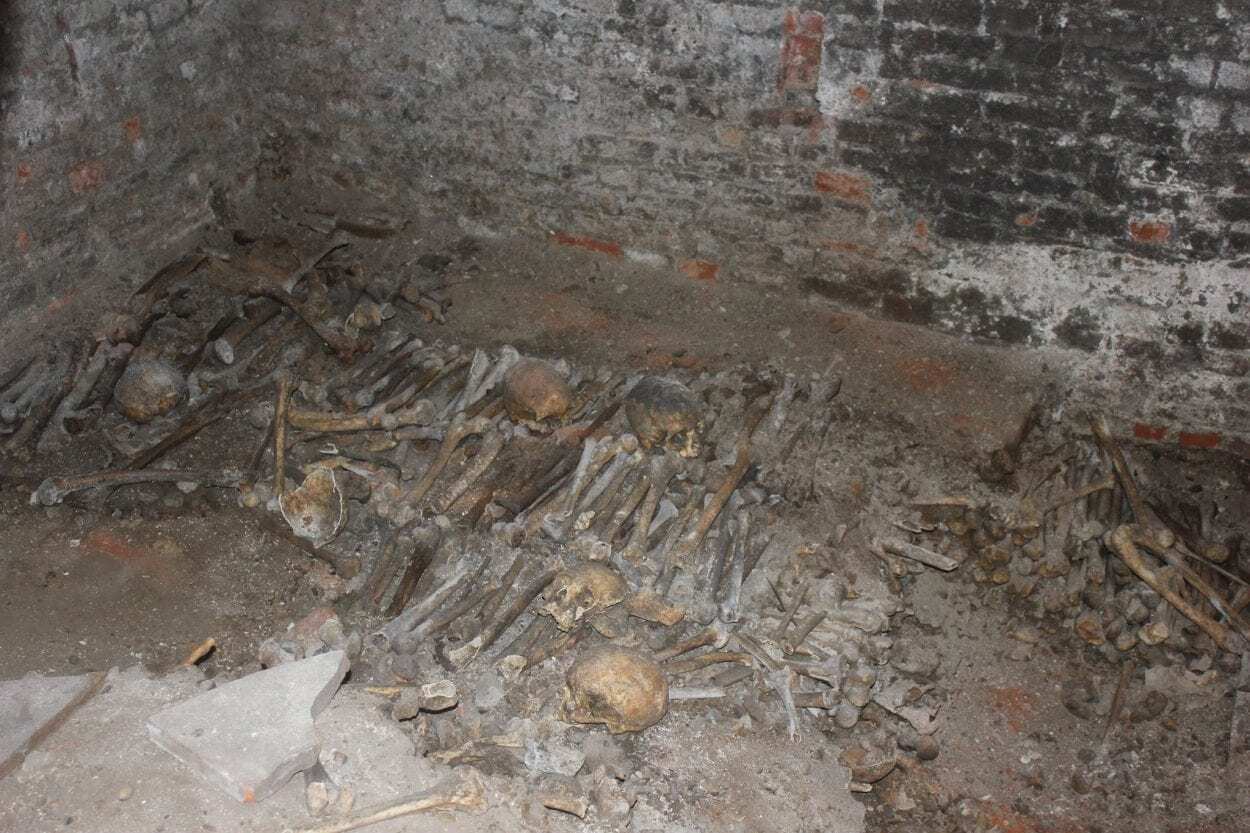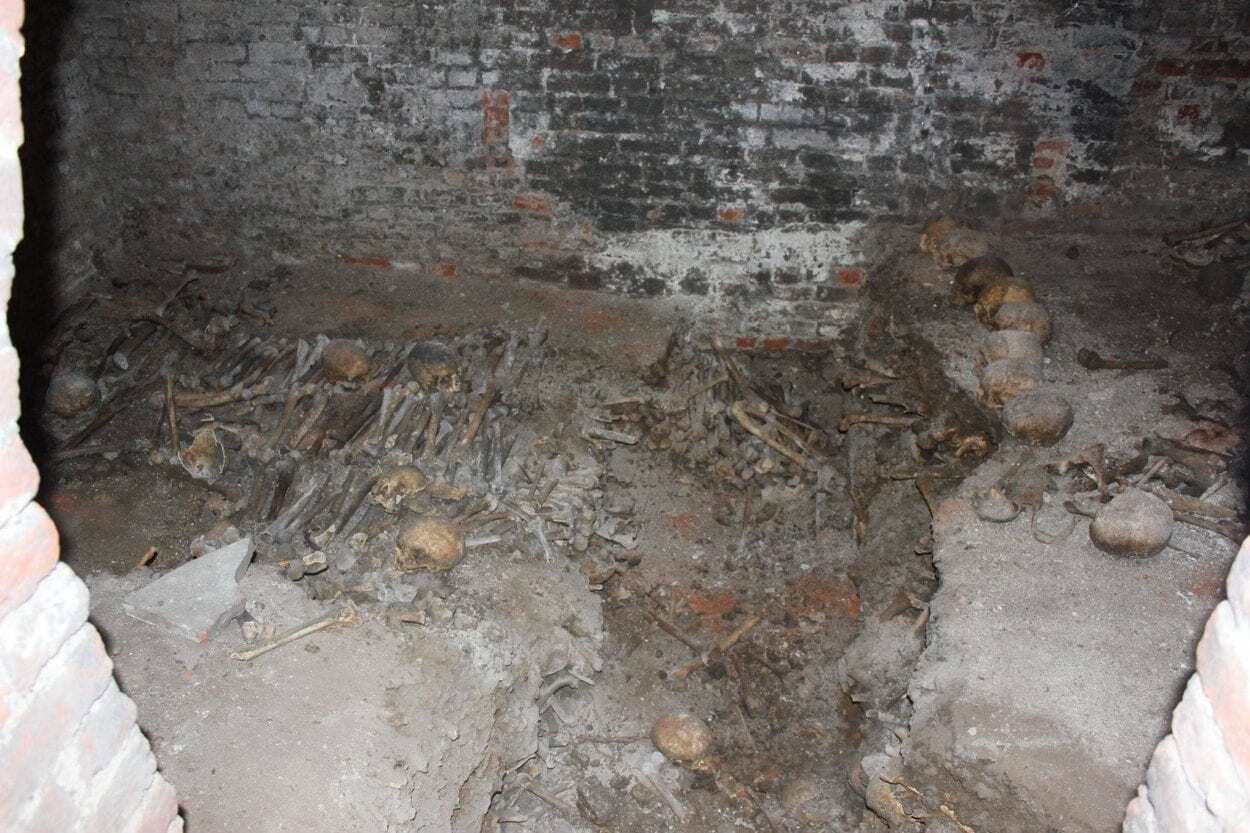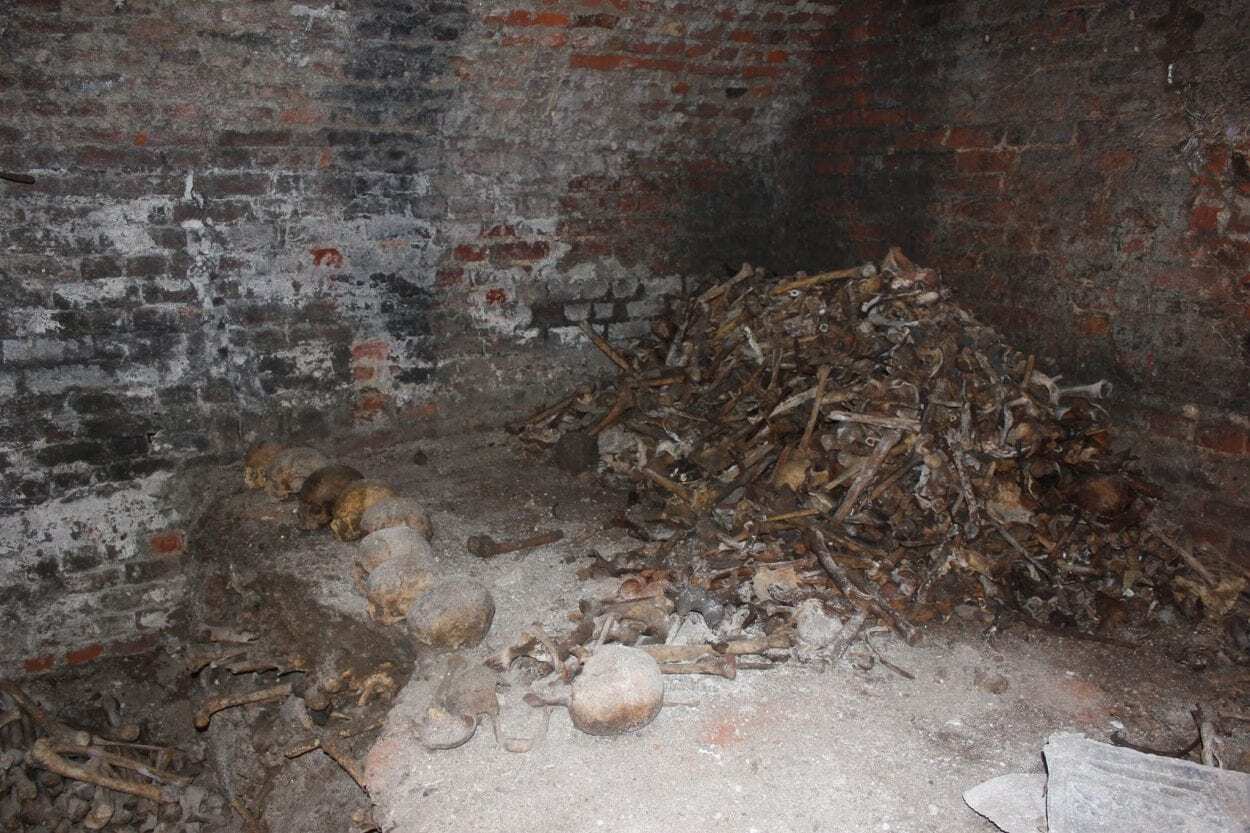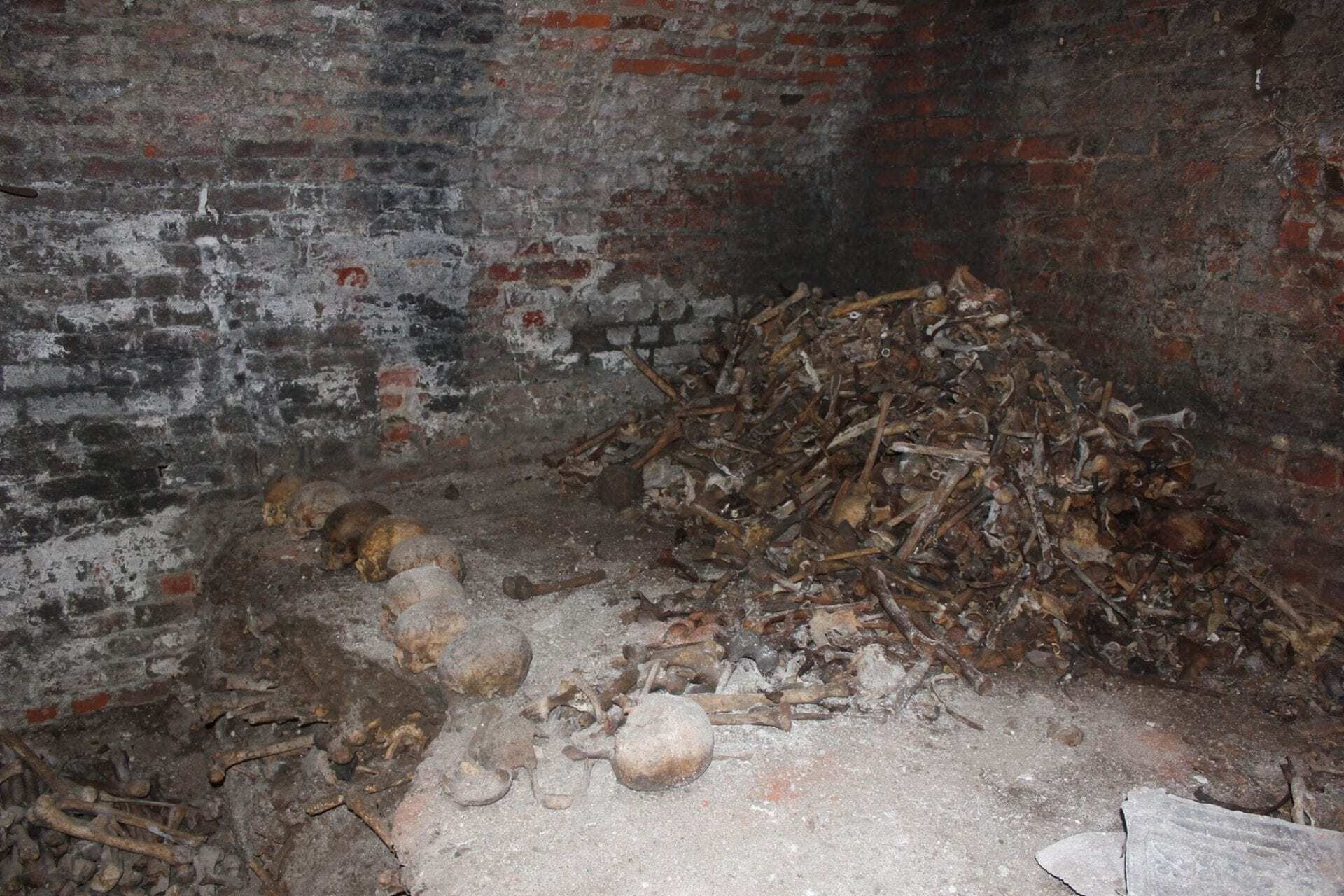St Bride’s Church in Fleet Street is a distinctive sight on London’s skyline, designed by Sir Christopher Wren in 1672 after the precursor was destroyed during the Great Fire of London.
The church sits on the remains of at least seven previous incarnations, with the earliest occupation dating to the Roman period (evident by the discovery of a mosaic floor beneath the church’s crypts).
In WW2, the church was gutted by incendiary bombs dropped by the Luftwaffe during one of the most destructive air raids of the Blitz, dubbed “The Second Great Fire of London”.

By the 1950’s, Godfrey Allen (an authority on Wren) was commissioned to rebuild the church, managing to deliver a faithful recreation based on Wren’s original vision.
During restoration and excavations on site, the church’s crypts were found to contain the assemblage of 14 sub-adults, and 213 adults from the period of the Great Plague of 1665, and the cholera epidemic of 1854.

A medieval charnel house was also discovered, containing an estimated 7000 human remains organised in a chequer-board pattern. Some of the skulls were placed in a linear arrangement, with the remainder of human bones placed in a macabre looking pile of bones.
The charnel house was most likely used due to the rapid increase in London’s population over the centuries, and the overcrowding of the city’s churchyards that was unable to cope with the number of burials in small plots of land.
They were often built near churches for depositing bones that are unearthed whilst digging fresh graves, with the practice being stopping at St Brides in the 1850’s by an Act of Parliament that prevented any further burial within the city area.






